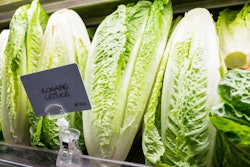
Beef, lettuce, turkey, cauliflower, romaine lettuce, sausages, rice, pork, ham, fish, eggs, hot dogs and Mac and cheese.
No, that’s not my shopping list — it’s a list of food products recalled by the FDA in a single 12-month period. With almost every recall including multiple items and brands, it’s no wonder why food safety is getting an unprecedented amount of attention.
The costs of these recalls are staggering, for manufacturers and consumers alike. According to the Grocery Manufacturers Association (GMA), the direct cost of a single food recall often exceeds $10 million. Some recalls have even reached $100 million in direct and indirect costs. Meanwhile, foodborne illnesses cost consumers $93.2 billion in 2015, according to research from Ohio State University.
Governments have responded to the increase in food recalls with new regulations designed to ensure food quality and safety. Proving compliance with these regulations is an expensive proposition. Most food manufacturers want to provide safe, high-quality foods to their customers. Prevention of quality issues must be at the top of every food manufacturers list of strategic initiatives, but many don’t have systems in place to develop and monitor safe processes.
Prevention of quality problems is less expensive than containing problems when they occur, and much less expensive than the cost of a single recall, even one of limited scope. It starts with suppliers and runs through production and distribution, and encompasses product and process design, employee training for safety and health, accountability and audit management. When these controls are add-ons to existing processes, they slow down production and add to costs. Food and beverage manufacturers need a QMS solution that covers all their needs, works the way they do and integrates seamlessly into their other business systems.
In addition to keeping costs low, focusing on quality with a state-of-the-art QMS can help by improving brand reputation. This improved reputation will attract more customers, and often those customers are willing to spend more for the assurance that they will receive quality for their money. As a result, margins increase, and the company’s profits increase.
The key is a QMS solution that integrates with the manufacturer’s existing business process and that provides a framework for enhancing processes and products. For example, a QMS system should work with designers and food scientists to ensure that the production processes are error-proofed as much as possible, and that they have built-in checkpoints and thresholds for alerts. Design for quality pays off, but it requires a QMS solution that goes well beyond “end-of-the-production-line” testing.
With this more-modern type of QMS solution, recording activities for compliance becomes a standard part of the job rather than an add-on process that can be forgotten or go unreported. Rather than send time amassing data for compliance reporting, a QMS solution designed for food and beverage manufacturing automatically gathers the necessary data and generates the necessary reports.
Even more importantly, it integrates with production processes and sounds alerts when processes near pre-determined thresholds. These alerts allow the manufacturer to take action early, often before poor quality products are processed and shipped. As a result, food and beverage companies find that focusing on quality makes compliance nearly effortless.


















